 W
WThe Ambrose Channel pilot cable, also called the Ambrose Channel leader cable, was a cable laid in Ambrose Channel at the entrance to the Port of New York and New Jersey that provided an audio tone for guiding ships in and out of port at times of low visibility. The cable was laid during 1919 and 1920; it had been removed from the channel and replaced by wireless technology by the end of the 1920s.
 W
WThe Regional Bell Operating Companies (RBOC) are the result of United States v. AT&T, the U.S. Department of Justice antitrust suit against the former American Telephone & Telegraph Company. On January 8, 1982, AT&T Corp. settled the suit and agreed to divest its local exchange service operating companies. Effective January 1, 1984, AT&T Corp.'s local operations were split into seven independent Regional Bell Operating Companies known as Baby Bells.
 W
WNokia Bell Labs is an American industrial research and scientific development company owned by Finnish company Nokia. With headquarters located in Murray Hill, New Jersey, the company operates several laboratories in the United States and around the world. Bell Labs has its origins in the complex past of the Bell System.
 W
WThe breakup of the Bell System was mandated on January 8, 1982, by an agreed consent decree providing that AT&T Corporation would, as had been initially proposed by AT&T, relinquish control of the Bell Operating Companies that had provided local telephone service in the United States and Canada up until that point. This effectively took the monopoly that was the Bell System and split it into entirely separate companies that would continue to provide telephone service. AT&T would continue to be a provider of long-distance service, while the now-independent Regional Bell Operating Companies (RBOCs), nicknamed the 'Baby Bells', would provide local service, and would no longer be directly supplied with equipment from AT&T subsidiary Western Electric.
 W
WThe Carterfone is a device invented by Thomas Carter. It manually connects a two-way radio system to the telephone system, allowing someone on the radio to talk to someone on the phone. This makes it a direct predecessor to today's autopatch.
 W
WThe Communications Act of 1934 is a United States federal law signed by President Franklin D. Roosevelt on June 19, 1934 and codified as Chapter 5 of Title 47 of the United States Code, 47 U.S.C. § 151 et seq. The Act replaced the Federal Radio Commission with the Federal Communications Commission (FCC). It also transferred regulation of interstate telephone services from the Interstate Commerce Commission to the FCC.
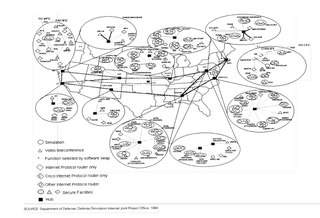 W
WThe Defense Simulation Internet (DSI) was a specialized, wide-area network created to support Distributed Interactive Simulation and videoconferences. It was sponsored by DARPA, and built and operated by BBN Technologies from about 1991-1995, after which time it was operated by the Defense Information Systems Agency (DISA).
 W
WThe Federal Communications Commission Consolidated Reporting Act of 2013 is a bill that passed the United States House of Representatives during the 113th United States Congress. The bill would "require the Federal Communications Commission (FCC) to prepare a biennial report for the Congress that assesses certain characteristics of the communications industry." That report would include an analysis of "the state of competition in the markets for voice, video, and data services, as well as the availability of high-speed and high-quality telecommunications services" in the United States. Perhaps most importantly, "the bill would require the FCC to determine whether laws and regulations pose a barrier to entry into communications markets and to include that information in the biennial report." The bill would also cancel a number of preexisting requirements for various other reports from the FCC.
 W
WThe Federal Radio Commission (FRC) was a government agency that regulated United States radio communication from its creation in 1927 until 1934, when it was succeeded by the Federal Communications Commission (FCC). The FRC was established by the Radio Act of 1927, which replaced the Radio Act of 1912 after the earlier law was found to lack sufficient oversight provisions, especially for regulating broadcasting stations. In addition to increased regulatory powers, the FRC introduced the standard that, in order to receive a license, a radio station had to be shown to be "in the public interest, convenience, or necessity".
 W
WA telephone call, which for marketing purposes is claimed to be the first transcontinental telephone call, occurred on January 25, 1915, a day timed to coincide with the Panama–Pacific International Exposition celebrations. However, the transcontinental telephone line was first completed on June 17, 1914, and successfully first voice tested in July 1914. A 1998 U.S. postage stamp commemorates the completion of the line in 1914.
 W
WThe Hawthorne Works was a large factory complex of the Western Electric Company in Cicero, Illinois. Named after the original name of the town, Hawthorne, it opened in 1905 and operated until 1983. At its peak of operations, Hawthorne employed 45,000 workers, producing large quantities of telephone equipment, but also a wide variety of consumer products.
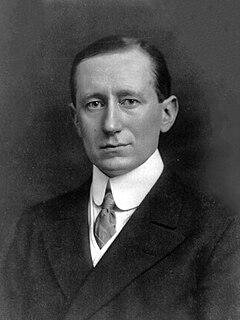 W
WIt is generally recognized that the first radio transmission was made from a temporary station set up by Guglielmo Marconi in 1895 on the Isle of Wight. This followed on from pioneering work in the field by a number of people including Alessandro Volta, André-Marie Ampère, Georg Ohm and James Clerk Maxwell.
 W
WHush-A-Phone v. United States, 238 F.2d 266 was a seminal ruling in United States telecommunications decided by the D.C. Circuit Court of Appeals. Hush-A-Phone Corporation marketed a small, cup-like device which mounted on the speaking party's microphone, reducing the risk of conversations being overheard and increasing sound fidelity for the listening party. At the time, AT&T had a near-monopoly on America's phone system, even controlling the equipment attached to its network. In this era, Americans had to lease equipment from Ma Bell or use approved devices. Hush-A-Phone had been around for 20 years without any issues. However, when an AT&T lawyer saw one in a store window, the company decided to sue on the grounds anything attached to a phone could damage its network.
 W
WAn independent telephone company was a telephone company providing local service in the United States or Canada that was not part of the Bell System organized by American Telephone and Telegraph. Independent telephone companies usually operated in many rural or sparsely populated areas.
 W
WThis is a list of White Alice Communications System sites. The White Alice Communications System (WACS) was a United States Air Force telecommunication link system constructed in Alaska during the Cold War. It featured tropospheric scatter links and line-of-sight microwave radio links.
 W
WIn computer networking, MILNET was the name given to the part of the ARPANET internetwork designated for unclassified United States Department of Defense traffic.
 W
WIn 1860, the Pacific Telegraph Act of 1860 called for the facilitation of communication between the east and west coasts of the United States of America. Hiram Sibley of the Western Union Telegraph Company won the contract. In 1861, Benjamin Franklin Ficklin joined Hiram Sibley in helping to form the Pacific Telegraph Company of Nebraska. At the same time, Jeptha Wade was asked by Hiram Sibley to encourage the consolidation of telegraph companies in California, a process that had been underway there anyway, most notably involving the merger of the two largest intrastate companies following a lawsuit between them, the Alta Telegraph Company and the California State Telegraph Company. The Overland Telegraph Company of California was thus formed with Horace W. Carpentier of the California State Telegraph Company serving as its president, and it began building east from Carson City, Nevada while its eastern counterpart, the Pacific Telegraph Company began building west from Omaha, Nebraska. Upon their connection in Salt Lake City, Utah on October 24, 1861, the final link between the east and west coast of the United States of America was made. The First Transcontinental Telegraph led to the immediate demise of the Pony Express. The Pacific Telegraph Company of Nebraska and the Overland Telegraph Company of California were eventually absorbed into the Western Union Telegraph Company.
 W
WIn 1860, the Pacific Telegraph Act of 1860 called for the facilitation of communication between the east and west coasts of the United States of America. Hiram Sibley of the Western Union Telegraph Company won the contract. In 1861, Benjamin Franklin Ficklin joined Hiram Sibley in helping to form the Pacific Telegraph Company of Nebraska.
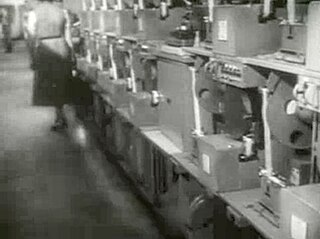 W
WPlan 55-A was one in a series of store and forward message switching systems developed by Western Union and used from 1948 to 1976 for processing telegrams. It is an automated successor to Plan 51, which commenced service in 1951 in a nationwide network of the U.S. Air Force, but required semi-automatic operation.
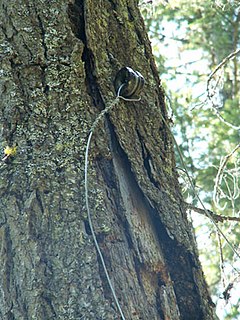 W
WThe Polebridge to Numa Ridge Phoneline is a historic communications path in Glacier National Park in the U.S. state of Montana. The line was the last remaining single-line crank telephone network in the American West. The remaining line, insulators, and terminals are instructive of early communication technology. The system includes the remains of a single strand system using an earth ground. Wire was strung through ceramic insulators mounted on trees. Phone poles still stand in the meadow south of Kishenehn Ranger Station, and a phone remains in place at Bowman Lake.
 W
WThe Russian–American Telegraph, also known as the Western Union Telegraph Expedition and the Collins Overland Telegraph, was a $3,000,000 undertaking by the Western Union Telegraph Company in 1865–1867, to lay an electric telegraph line from San Francisco, California to Moscow, Russia.
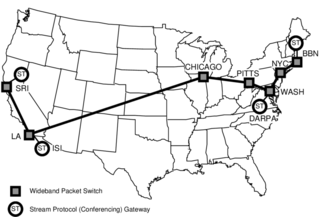 W
WThe Terrestrial Wideband Network was a DARPA-sponsored experimental network designed to support research in high-speed networking protocols and distributed multimedia applications. It was built and operated by BBN Technologies from May 1989 to about 1991; although originally planned to turn into the Defense Research Internet, it instead evolved into the Defense Simulation Internet.
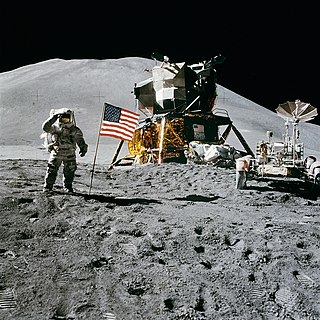 W
WThe Unified S-band (USB) system is a tracking and communication system developed for the Apollo program by NASA and the Jet Propulsion Laboratory (JPL). It operated in the S band portion of the microwave spectrum, unifying voice communications, television, telemetry, command, tracking and ranging into a single system to save size and weight and simplify operations. The USB ground network was managed by the Goddard Space Flight Center (GSFC). Commercial contractors included Collins Radio, Blaw-Knox, Motorola and Energy Systems.
 W
WThe Volta Laboratory and the Volta Bureau were created in Georgetown, Washington, D.C. by Alexander Graham Bell.
 W
WThe White Alice Communications System was a United States Air Force telecommunication network with 80 radio stations constructed in Alaska during the Cold War. It used tropospheric scatter for over-the-horizon links and microwave relay for shorter line-of-sight links. Sites were characterized by large parabolic, tropospheric scatter antennas as well as smaller microwave dishes for point to point links.